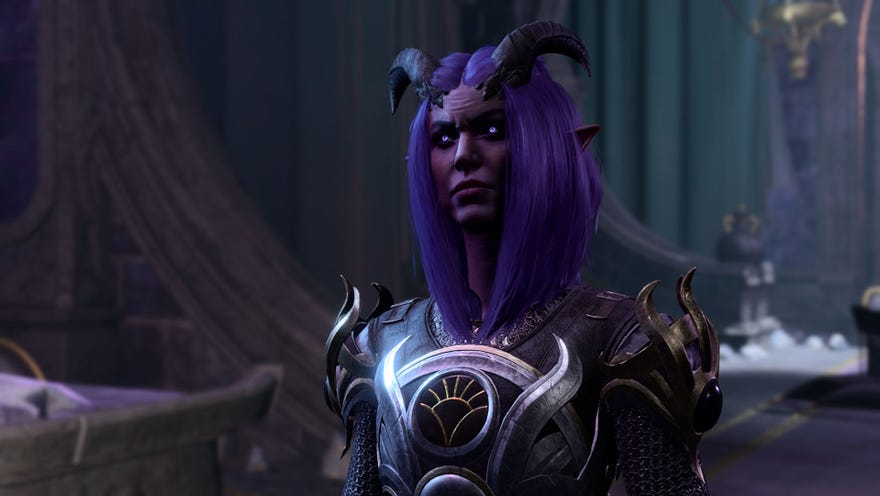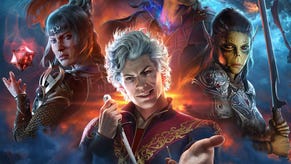Baldur's Gate 3's Nocturne is a landmark in trans representation, but for her voice actor it's just the beginning
Abigail Thorn, aka Philosophy Tube, says "the goal is liberation, not celebrity".
I bought Baldur's Gate 3 shortly after its release as a need than a want, when I was a year-and-half into my gender transition and hormone replacement therapy. Gender transition is not just an arduous journey of self-discovery, but also a profound and constant engagement with one’s own reality. I was desperate for some escapism, and Larian Studios’ much-anticipated new entry into the Baldur’s Gate fantasy RPG franchise offered the perfect rabbit hole to fall down.
As a child, my gaming habits were relatively stereotypical for a closeted girl: select female characters wherever possible, especially in RPGs. But the immersion almost always wears off. The trans inclusion in games like Dungeon Siege, Sacred 2: Fallen Angel, The Elder Scrolls IV: Oblivion and others is effectively non-existent, and the result for transgender and transsexual players is a feeling that, even in fantasy worlds, we are invisible at best. Nocturne, a trans supporting character in Baldur's Gate III played by Abigail Thorn, has changed that experience for me. In an interview, Thorn shared some of her thoughts and experiences regarding Nocturne and trans representation in games.
Thorn is likely best known for her YouTube channel PhilosophyTube, where she produces provocative and timely video essays on topics ranging from climate change to, more recently, the ethical considerations of artificial intelligence. She is also no stranger to performance, being a trained actor who has starred in several TV shows as well as a stage play, The Prince, which she also wrote. That her career has made a stop in Baldur’s Gate, one of the most popular fantasy RPG franchises and the biggest game of 2023, is a milestone – not least for the industry and for trans gamers. Thorn, explaining her excitement for the role, described voiceover work as a “fun balance of technical challenge and creative art,” adding that playing Nocturne gave her the chance to perform physically too, it being her first chance to work with motion capture technology.
Despite being ignorant of Thorn’s presence in Baldur’s Gate III, signs of the game’s trans-inclusivity were evident in initial promo materials showing off its character creator. The ability to select the genitals of your character separately from their gender is not something we see often, and goes a long way to make trans gamers feel recognised. And unlike Cyberpunk 2077’s controversial implementation of the same idea, Larian Studios seemed to be approaching the topic of gender, sex, and bodies in their fantasy game with a degree of respect.
I ask Thorn whether she holds any trans characters from video games or other fictional media close to her heart, and she says she's tempted to say Abby in The Last Of Us Part 2 or Link in The Legend Of Zelda, to be cheeky. “But truthfully,” she says, “I have two portraits on the wall of my study and they aren’t characters, they’re real women: Kim Petras and Audre Lorde.”
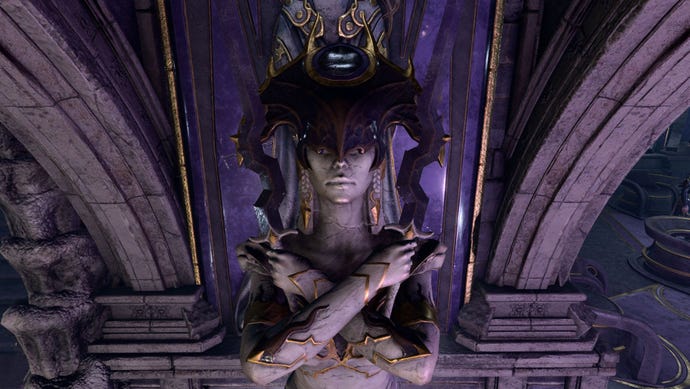
“Kim’s music called me home to a femininity like a message from outer space; I didn’t know how to get there but I knew I needed to go,” she explains. “Audre Lorde and other black cis feminists helped me build the rocket; I learned from them how to think about and through myself, both as a trans person and also just as a woman.”
In a way, Thorn's preference to give her real life inspirations in a discussion about the impact of a fictional character hits right upon why Nocturne is such a meaningful character to a trans female gamer; behind Nocturne, lending her life, is a real woman. Just as Kim Petras called to Thorn from outer space, Nocturne can call to trans women from her distant fantasy realm of Faerûn. By the time I met Nocturne - a member of the same group of Shar worshippers as companion character Shadowheart - and learned of her backstory by talking to her and others who knew her prior to her transition, I was already on my own transition journey. I was primed not to be called to a new destination, but to be reminded of where I have come from, and how far that place now lies in my past.
Both Nocturne and her friend and ex-lover Shadowheart’s stories are about discovery and fighting to be their most authentic selves. The two were members of the punitive Cult Of Shar together, and both changed their names and identities during their time in it. Shadowheart’s identity shift, despite her being cisgender, is what initially emboldened Nocturne to do the same. Nocturne says that she never found others’ mocking of Shadowheart’s name change amusing, particularly because it helped her realise she herself was unhappy with who she was.
“Shadowheart is cis?!” exclaims Thorn. “I assume every character is trans unless explicitly stated otherwise, do you not? ...I’m kidding of course. When trans people transition everyone around us has to go through a kind of transition too: changing the way they think, sometimes letting go of old ideas. Our families especially sometimes go on a perilous quest for knowledge. It might be easier for them if they could see characters in fiction making similar journeys.”
Baldur’s Gate III does a magnificent job of teasing out the details of Nocturne’s life through Thorn's performance, but also through environmental storytelling. When you meet Nocturne, you can also find her private diary nearby, and, forgetting real-world conventions of respect and healthy boundaries, read it. There's an entry which presumably came not long after she changed her name and began her transition: “I am Nocturne. I think as her. I see her when I look in the mirror. I can’t remember the last time someone called me by the wrong name – Shadowheart has been swift to gently correct slips of the tongue, and even swifter in challenging those who’d use my forsworn name in malice. I’m lucky to have her as a friend.”
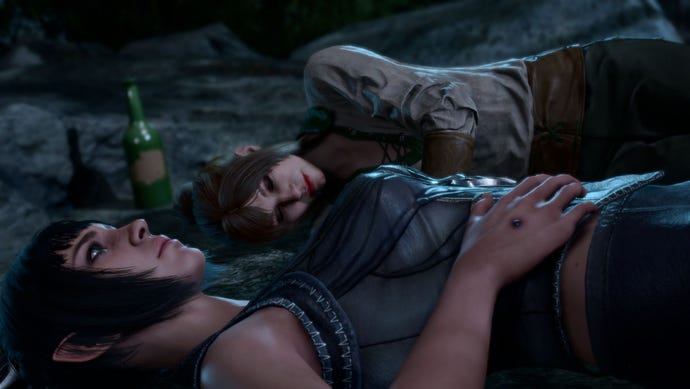
Nocturne’s diary entries are deeply relatable to, perhaps, most trans people, as we slowly develop congruence between our inner selves, the person we see in the mirror, and the person that others see. Nocturne’s story is both physical and psychological; her experience of gender ephemeral, personal, and social all at once. It is a remarkable achievement for a minor character, with all credit due to the game’s writers, character designers, and of course, Thorn. I ask how the process of bringing this trans character to life was different compared to her role as Nora, a 2D character from Harmony: The Fall Of Reverie, or Hotspur from her play The Prince, and she says she approached it in the same way as other professional acting roles: research the character, find fun characteristics and mannerisms, and try to get inside their head.
“Nocturne was an interesting one because there’s a lot of lore to get to grips with that provides context for her inner life,” Thorn adds. “The only difference is I don’t have to think about the costume! Which is a plus and a minus, I suppose: I often get a strong sense of a character from their shoes – how someone makes contact with the Earth tells you so much about them,” she says. “But of course when you’re just a voice you have to wear imaginary shoes!”
Imaginary shoes. If there is a better descriptor of the immersion of RPGs, I’ve never heard it. Stepping into Faerûn as my character, a human druid, was to don a pair of imaginary leather boots and become a different version of myself in another world. When I met Nocturne, her story resonated; she has walked a journey similar to my own. There is something quite marvelous in finding kinship with an imaginary being. When it comes down to just what is so powerful about stories, fictional or not, is it not always about wanting to see our own of what Thorn calls “perilous quests” reflected in the lives of others? Is the power of representation not always about seeing both living people and characters in fairy tales “making similar journeys”? As a trans woman, the most exciting thing about a canonically transgender character like Nocturne in a fantasy world like Baldur’s Gate III is that it is a reminder that we can and do exist in the real one, too.
While there are and have been other trans characters in video games, very few have managed to so effectively share what their internal worlds look like with the player, or their feelings about the process of their transition. Examples of trans-coded and queer characters like Rivet and Kit in Ratchet and Clank, Madeline in Celeste, Vivian and Birdo in the Nintendo canon, Larissa in Red Strings Club have all contributed to trans and queer storytelling in video games just by existing. Nocturne is also not even the first transgender character in the Baldur’s Gate franchise. The first official trans character in the series, Mizhena, raised controversy when she debuted in the 2016 expansion pack DLC for the first Baldur’s Gate game, Beamdog’s Siege Of Dragonspear.
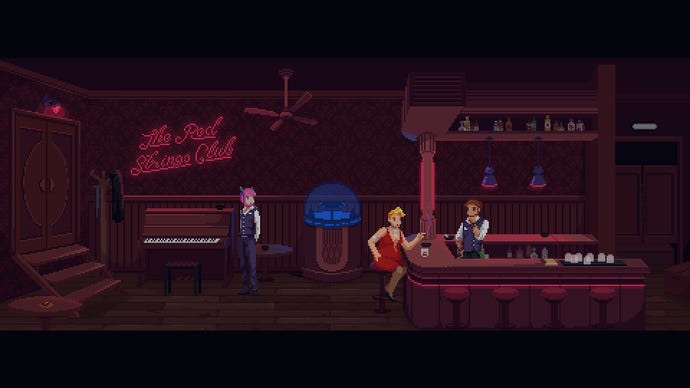

Mizhena’s depiction in Siege Of Dragonspear may have laid the basic foundations for Baldur’s Gate III’s Nocturne, but as a character she was still very much incidental in the world, and her trans story was condensed into just four lines of dialogue. But the writers at Larian Studios, along with Thorn's performance, have gifted Nocturne’s transness an extra touch of humanity and candour that is seldom seen in video games. I ask Thorn whether or not she felt optimistic about the increase of trans representation in media, and her answer is cautious. Though her work has, in the past, resulted in people recognising they were trans themselves, she says that trans representation won't solve all our problems.
“White supremacist capitalist cisheteropatriarchy violently inflicts precarity on the vast majority of queer people whilst uplifting one or two 'special queers' - myself included - on the condition that we perform queerness in such a way that allows cishet people to delude themselves into believing they aren’t complicit in or benefitting from that violence. When we see trans characters in media and trans kids sleeping rough on the streets those things aren’t necessarily in tension: they’re part of the same societal mechanism of control and consent manufacture,” she explains, noting that, despite condemnation from international medical authorities, the NHS may go ahead with banning puberty blockers in the UK. “If they can do that and get away with it, what good does it really do if Abigail Thorn is on television? Trans representation is nice, but I prefer to think in terms of Trans Power. We need to control our own lives, and that means cis people like NHS managers need to give up some of the power they have over us. If me being in movies and TV shows and games helps with that then great, but the goal is liberation not celebrity.”
In the context of Nocturne’s world, both her and Shadowheart’s oppression by the Cult Of Shar is extreme, but doesn’t compare with the very real and even more extreme systems of oppression we face in the real world. Still, Thorn’s answer made me think about what it is that is so important about the relationship between fiction, representation, and reality. As a woman who almost never made it this far into my own life, the importance of seeing people like Kim Petras, Nocturne, Laverne Cox, or, yes, even Poison from Final Fight, lies not in their popularity, but in the story of possibility they tell by existing. To me, Thorn’s emphasis on practical rights and freedoms for trans people goes hand in hand with what she compared to a “message from outer space”: a signal of hope that we too can continue to exist.

“It’s nice that trans people can be represented in fantasy, because of course we have fantasies like anyone else! Imagining yourself into a different world is part of the fun of role playing, and I like that trans players can place themselves into Baldur’s Gate III in all their realness,” Thorn says. “The thing about Nocturne is that she comes with the label and she can never take it off – she’s 'The Trans Character' and that’s close to the sum of her raison d'être in the minds of many. I don’t think that’s the writers’ fault or anything, it’s just an inevitable consequence of where we are right now, sociopolitically speaking. Whereas real people like you and me, we’re many things: I’m a daughter, a sister, an auntie, an actress, a voter, a businesswoman, a writer – and I happen to also be trans.”
In the end, Nocturne in Baldur’s Gate III is more than just a character – she’s a reminder that trans individuals are multifaceted, with diverse experiences beyond just our gender. Thorn’s candid reflections on her portrayal emphasise that representation in fiction should not be celebrated as-is, but rather treated as a catalyst for understanding, acceptance, activism, and ultimately liberation in society. Despite my intention in playing Baldur’s Gate III having been to escape reality, in navigating a second life in Faerûn and meeting Nocturne I found echoes of my journey, a pair of imaginary shoes that could have been my own, and a reminder that as a trans woman I’m not alone. Seeing a fictional character make a similar journey to my own, portrayed by a living trans woman, made me feel – like turning over the last page of a good book – fuller returning to my life in the real world.
